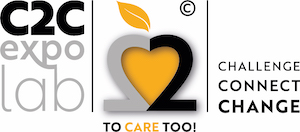Guide on C2C Beyond waste management
The Guide beyond waste management contains four chapters. An introductory chapter explains Cradle to Cradle. The objective of the second chapter is to identify the actual status of the EU waste legislation, based on a review. It aims to give insight in the strategic policy lines which were followed in the past and how these are meant to evolve in the future, with a clear link to the actual policy documents. The third chapter builds a view on how society could or should look like in the future. The final chapter presents recommendations in order to build an eco-effective society.
- Cradle to Cradle foresees the transition from the current industrial model, that ‘takes, makes and pollutes’, to a system with healthy and safe products whose materials are renewable on short term (biological nutrients) or stay in cycles (technical nutrients). This new model will require a shift from ownership to ‘usership’ for products that are made of technical nutrients. The Cradle to Cradle con- cept does not only apply to products but also to urban and regional planning. Making reference to how nature is managed, Cradle to Cradle stimulates to design our buildings as trees and our cities as forests. Cradle to Cradle must be understood as an essential step in the transition from eco- efficiency to eco-effectiveness.
- In its Europe 2020 strategy to put Europe’s economy back on track, the European Commission considers innovation and resource efficiency as two of its seven flagship initiatives to reach its goal. Almost all initiatives with respect to avoiding or reducing environmental damage are ultimately motivated by an appeal to the economic objective of more growth and jobs, the aim of reducing import dependency and/or to urgency to offset the consequences of climate change. The EU ap- proach with respect to waste sticks almost exclusively to the 3R paradigm (reduce, recycle, reuse). On the good side, although C2C is a new concept also at the EU level, the ideas promoted by C2C are partly and implicitly present in the introductory visionary statements of the more recent policy frameworks. However, they lack in the operational development of the EU policy documents. There is thus a clear and urgent need to speed up this change in order to meet the societal challenges and the ambitions put forward.
- EU 2020 notably aims for an economy that is more energy and resource efficient, greener and more competitive. Europe should be energy and material independent. But what does that mean in practice? One of the main consequences is a shift with respect to hazardous materials manage- ment installing a totally new concept, which could be named a lego approach. In a Cradle to Cradle society consumers buy a service, not a product. Materials carry use functions and should move freely within society. A complete shift towards a service economy may and should be expected. This will have major consequences for the energy debate driving mainly on renewable energy. ‘Do- ing things right from scratch’ also applies to policy making. The application of C2C principles is no longer hindered by laws and regulations. To make this happen, Europe has a solid home market for C2C products. This can only work if the market is steered into a direction where innovation with environmental benefits is rewarding. Radical innovation underpins the transformation towards and the further development of the C2C society.
- The recommendations focus at the strategic, rather than the operational level, guiding EU policy towards eco-effectiveness. The recommendations are proposed on four levels (1) Create a common framework for an eco-effective society (2) Stimulate demand (3) Stimulate supply and (4) Innovation through partnerships.


